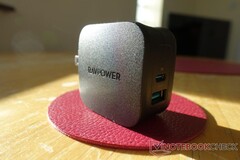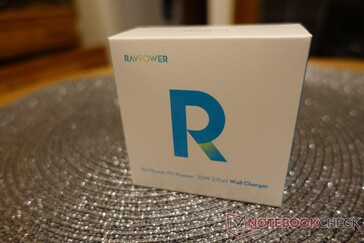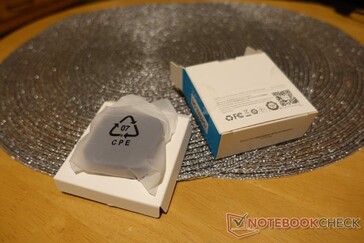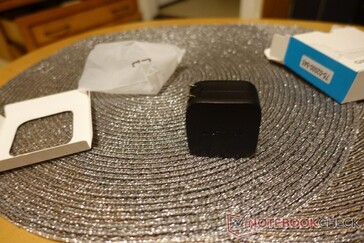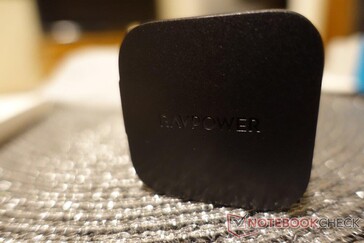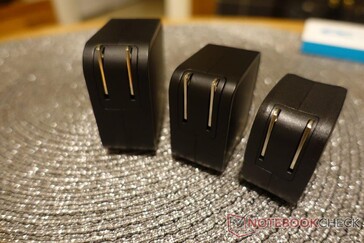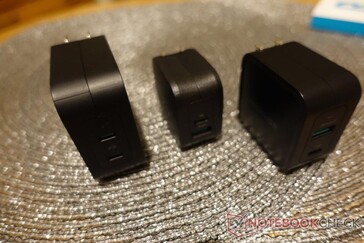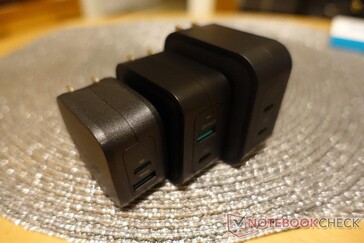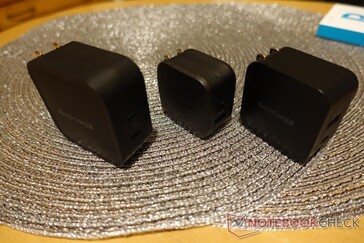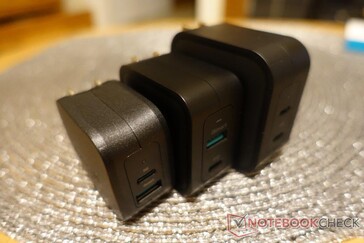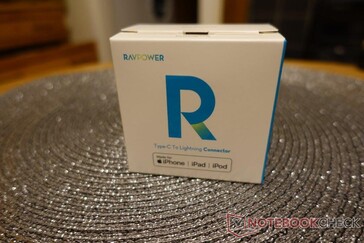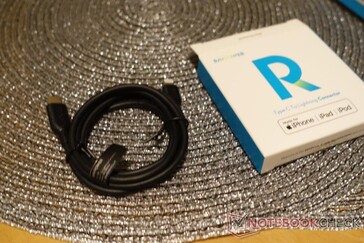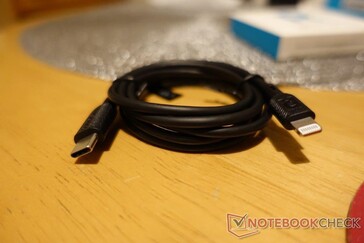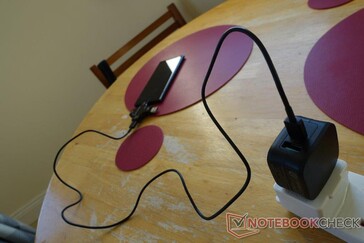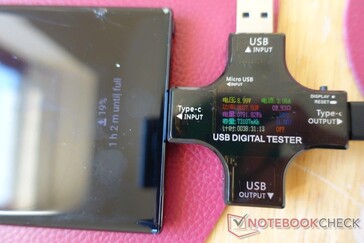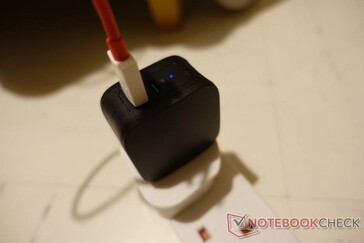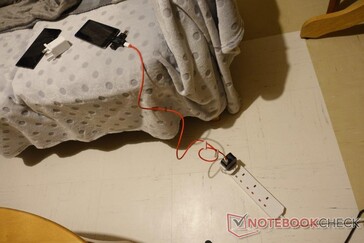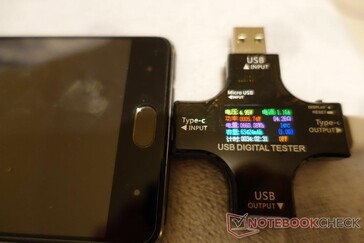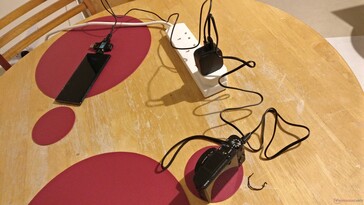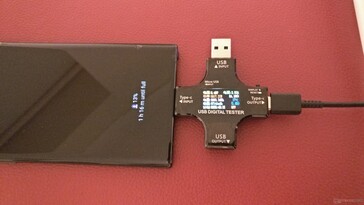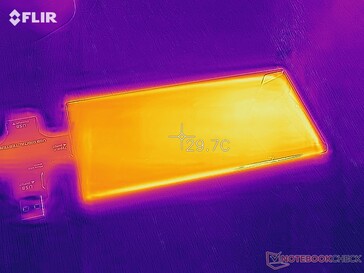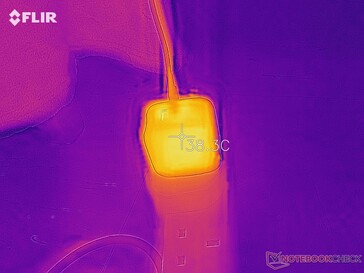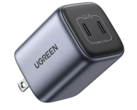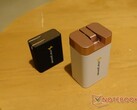It should be clear by now that iPhone 12 owners need a completely new power brick in order to use their new phone's maximum 20W wired charging rate. However, their first-party options are single-port accessories that are also now separate purchases in 2020. However, RAVPOWER thinks these consumers are better off with an alternative that is not only rated to deliver the new standard, but can also go up to 30W for devices of different ecosystems. To this end, it has developed the RP-PC144, a new member of the PD Pioneer charger series that might do both.
First Impressions
From its unboxing, it is apparent that this power brick is geared for space-saving. At 1.93 x 1.93 x 1.18 inches, with foldable pins in its US-compatible variant (which is what I have here), it has an appreciably small footprint. It outdoes its 61 to 90W siblings in this respect and also has top and bottom edges that curve inwards so as to make it seem even smaller. Then again, its more powerful counterparts have the same soft-touch finish that seems more premium compared to the RP-PC144's hard plastic.
The charger also comes with a matching MFi-certified cable (the RP-CBO54). We know it has this spec because it has a USB type C connector on one end and a Lightning connector on the other. This proprietary charging system has made it for yet another year, and its appearance with this product hammers RAVPOWER's targeting of iPhone and iPad users home.
The cable itself seems solid enough, recalling the USB type C to C cable included with the 90W PD Pioneer variant, although at just 1 meter it could have been longer. In addition, its non-universal business end seemed resistant to all the bending and warping I indulged in giving it, as opposed to the poor build quality I have encountered in things with this connector (bundled with other power accessories I've owned) in the past.
However, as I do not currently have an iPhone 12, or ready access to one at the moment, I cannot speak as to its capacity as an item of charging.
Onward, then, to something this brick can charge. Obviously, the ultrabooks available to its 65 or 90W kin are beyond it, but based on the 5V/3A; 9V/2A; 9V/2.22A; 9V/2.77A or 15V/2A rating of its USB type C connector, a 2019 Android flagship was probably within its reach. So it was: My Samsung Galaxy Note 10+ proved completely compatible with this wall-wart. In fact, this combination resulted in charging at 25 to 27W, although this rate did fall to about 17W as the charge reached 100%.
It's worth noting that the phablet has reproducibly refused to do the same when connected to the higher-wattage variants from the PD Pioneer series. Then again, it would also only perform with the RP-PC144 in this way when its own cable was used.
This little RAVPOWER brick also has a USB type A port, rated for up to 18W PD charging. Therefore, the type C connector's rate was likely to drop if something else was plugged into this port at the same time. An attempt to juice the Galaxy Note 10+ and my digital camera at the same time proved that this was the case.
Unlike its PD Pioneer-series predecessors also reviewed here, there is no mention of gallium nitride (GaN) technology in conjunction with the new 30W wall-wart. Nevertheless, a FLIR camera check after about an hour of charging revealed acceptable levels of heat in both the charger and device in question. Then again, it has to be said that the ambient temperature around here is currently dropping like a stone, so I can't speak to its thermal management in warmer seasons (or locations). Or, you know, normal room temperature without the central heating on any more. No new hand-warmers for me, then.
Conclusion
This new RAVPOWER PD Pioneer 30W brick seems to have acquitted itself quite well in my testing. Therefore, it may be a good choice for those who need a fast charger - but only if it is for relatively undemanding devices such as USB-PD-enabled smartphones and cameras, and especially if your favorite OEM suddenly doesn't want to include one in a retail box as standard. On that note, its dual-port nature might be an advantage over stock chargers.
Then again, a first-party 12-series charger costs US$19 on Apple.com, whereas the RP-PC144 is currently priced at $25.99 on its own OEM's site. You could argue that you also get a Lightning cable thrown in, although there is still one included with every new iPhone (correct at time of writing). Therefore, it is up to an interested consumer to decide whether that extra port and its concomitant functionality is worth the added outlay when sourcing a new wired solution for one's brand new non-Android mobile device. Nevertheless, this RAVPOWER option also still powers a wider range of items.
Disclaimer: The author of this review received this item from RAVPOWER free of charge for the purpose of testing.




